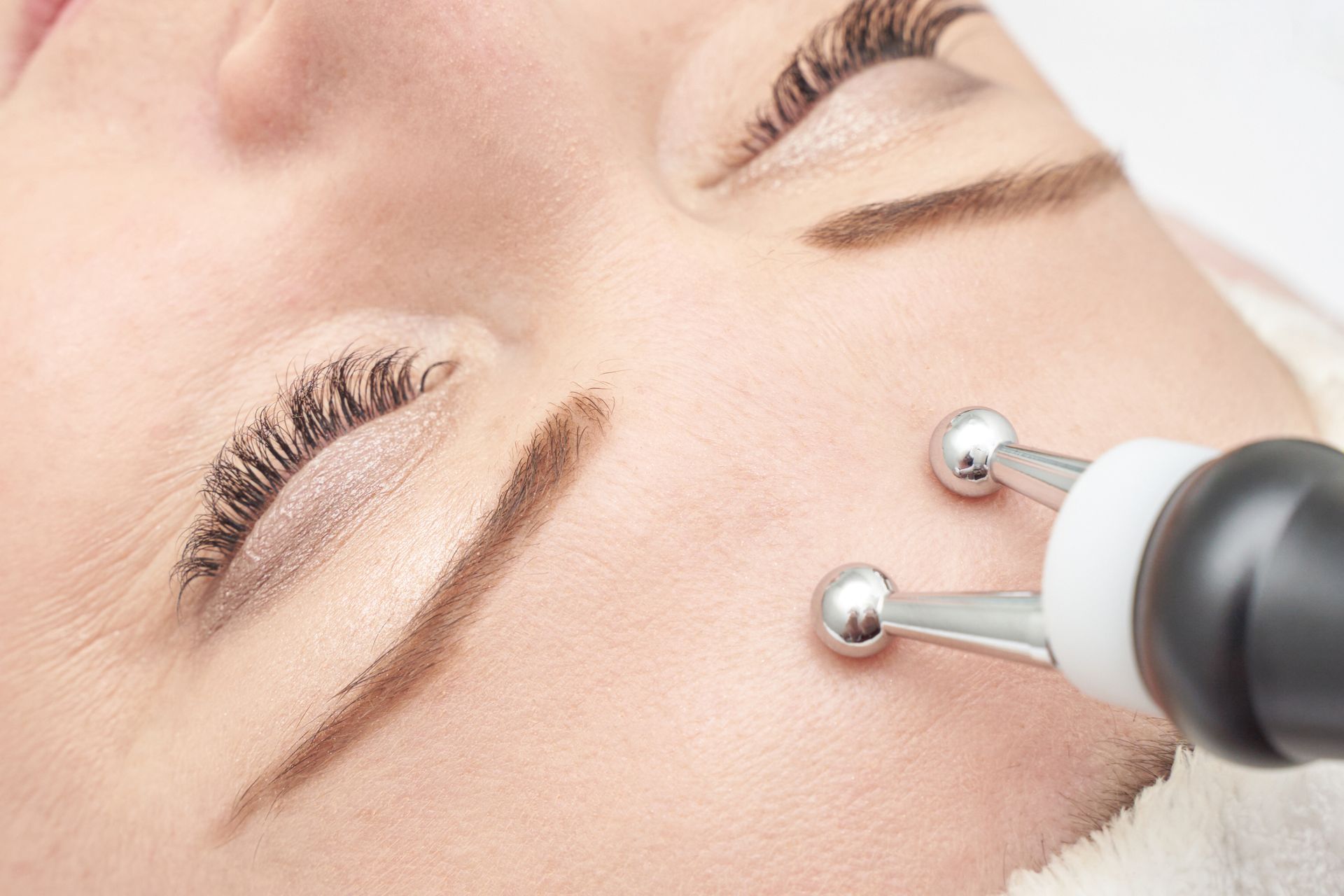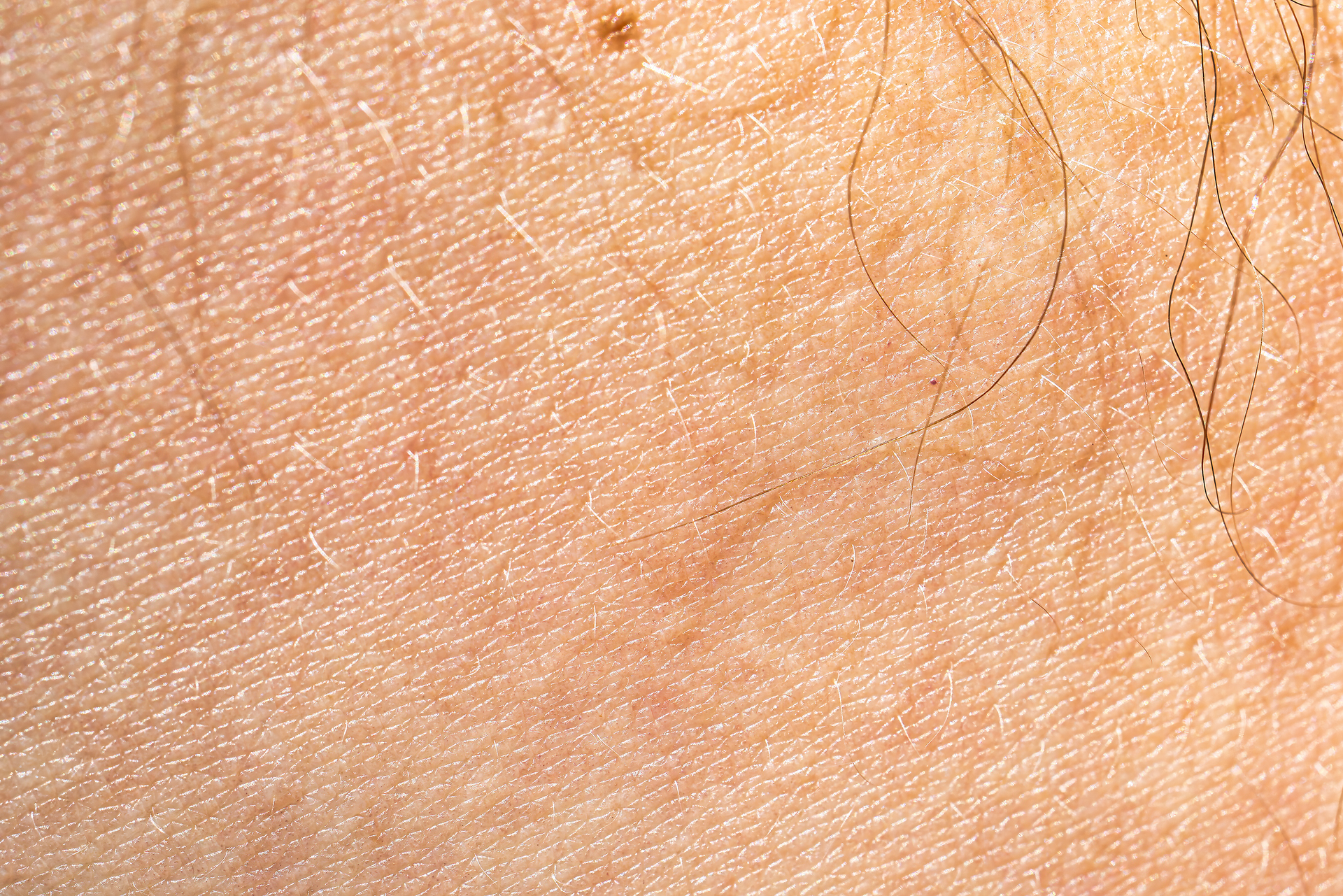ELECTROLYSIS
ELECTROLYSIS
What is Electrolysis?Permanent Hair Removal Treatment in the UK
Electrolysis is the only form of permanent hair removal that is medically recognised and approved by leading health authorities including the British Medical Association (BMA), the Food and Drug Administration (FDA), and the American Medical Association (AMA).
This clinically proven treatment offers a safe, effective, and permanent solution for eliminating unwanted hair, regardless of skin tone or hair colour. When performed by a qualified electrolysis practitioner, it remains the gold standard in permanent hair removal.
What is Electrolysis?Permanent Hair Removal Treatment in the UK
Electrolysis is the only form of permanent hair removal that is medically recognised and approved by leading health authorities including the British Medical Association (BMA), the Food and Drug Administration (FDA), and the American Medical Association (AMA).
This clinically proven treatment offers a safe, effective, and permanent solution for eliminating unwanted hair, regardless of skin tone or hair colour. When performed by a qualified electrolysis practitioner, it remains the gold standard in permanent hair removal.


What is Electrolysis?Permanent Hair Removal Treatment in the UK
Electrolysis is the only form of permanent hair removal that is medically recognised and approved by leading health authorities including the British Medical Association (BMA), the Food and Drug Administration (FDA), and the American Medical Association (AMA).
This clinically proven treatment offers a safe, effective, and permanent solution for eliminating unwanted hair, regardless of skin tone or hair colour. When performed by a qualified electrolysis practitioner, it remains the gold standard in permanent hair removal.
About
Electrolysis
Electrolysis is a course of treatment that permanently removes hair growth when performed by a registered, skilled and experienced electrolysist.
Electrolysis permanent hair removal has the longest known track record together with the most effective results for permanent hair removal. Dr Charles Michel first used it successfully in 1875 to remove ingrown eyelashes. He discovered that once the follicle had been treated with electrolysis the hair was permanently destroyed.
For over 100 years, electrolysis has been recognised as a safe, reliable method of treating all skin and hair types. Many new treatments for hair reduction or non-permanent hair removal have emerged over the years; electrolysis has remained the only treatment to achieve permanent and complete eradication of unwanted hair when performed by a skilled, experienced practitioner.
For those who seek complete and permanent hair removal on any part of the body, regardless of skin tone or hair colour, there remains only one method that is approved by the British Medical Association – electrolysis.
Key
Methods
There are 3 methods of electrolysis to choose from in order to tailor your treatment to your skin type and reaction, and all 3 are capable of permanently removing hair. They are:
Galvanic
Thermolysis (is also called diathermy or RF diathermy in some countries).
The Blend
People seeking permanent hair removal often do so due to medical or health reasons, and many choose electrolysis to achieve a permanently groomed look. For example: bearded men. Our members are competent and confident to work with clients according to their individual needs and medical conditions that bring about unwanted hair growth.
- Hair removal for women
- Hair removal for men
- Hirsutism
How
Electrolysis Works
- Electrolysis involves the insertion of a very fine, sterile probe into the hair follicle. A short burst of electrical energy is then delivered to the follicle root, effectively disabling the hair growth centre. Once the follicle is treated, the hair is gently removed with tweezers.
- Targets the root directly: Unlike laser, electrolysis works at the precise root of each individual hair.
- Suitable for all hair types: Works on blonde, grey, red, white, or dark hair.
- Three methods available: Galvanic, Thermolysis (shortwave), or Blend – chosen based on skin and hair type.
- Over a course of treatments, this process permanently reduces and eventually eliminates hair growth, leaving skin smooth, clear, and hair-free.
Key
Benefits of Electrolysis
- Permanent results: Once the follicle is destroyed, hair does not grow back.
- Works on all hair and skin tones: Ideal for light, fine, or coarse hair – unlike laser which may struggle with light or grey hairs.
- Precision targeting: Excellent for small or delicate areas like the upper lip, chin, eyebrows, or nipples.
- Safe and proven: Backed by over 100 years of medical use and approval by leading health organisations.
- Customisable treatment: Settings and technique are adjusted for your skin sensitivity, area size, and hair type.
- Minimal downtime: Mild redness may appear post-treatment, usually subsiding within a few hours.
How
Electrolysis Works
- Electrolysis involves the insertion of a very fine, sterile probe into the hair follicle. A short burst of electrical energy is then delivered to the follicle root, effectively disabling the hair growth centre. Once the follicle is treated, the hair is gently removed with tweezers.
- Targets the root directly: Unlike laser, electrolysis works at the precise root of each individual hair.
- Suitable for all hair types: Works on blonde, grey, red, white, or dark hair.
- Three methods available: Galvanic, Thermolysis (shortwave), or Blend – chosen based on skin and hair type.
- Over a course of treatments, this process permanently reduces and eventually eliminates hair growth, leaving skin smooth, clear, and hair-free.
Key
Benefits of Electrolysis
- Permanent results: Once the follicle is destroyed, hair does not grow back.
- Works on all hair and skin tones: Ideal for light, fine, or coarse hair – unlike laser which may struggle with light or grey hairs.
- Precision targeting: Excellent for small or delicate areas like the upper lip, chin, eyebrows, or nipples.
- Safe and proven: Backed by over 100 years of medical use and approval by leading health organisations.
- Customisable treatment: Settings and technique are adjusted for your skin sensitivity, area size, and hair type.
- Minimal downtime: Mild redness may appear post-treatment, usually subsiding within a few hours.
Areas
Treated with Electrolysis
- Electrolysis is safe and effective for almost all areas of the body, including:
- Facial Hair: Chin, upper lip, jawline, cheeks, eyebrows, and sideburns.
- Body Hair: Underarms, arms, bikini line, chest, abdomen, nipples, and back.
- Delicate Zones: Fingers, toes, and other small areas requiring precision.
- Transgender Hair Removal: Suitable as part of pre-surgical or hormonal transition procedures.
Treatment Timeline & Results
- Visible results after each session, with a gradual reduction in regrowth.
- Most clients require multiple sessions (usually 6–18+), depending on hair density, growth cycles, and area size.
- Once a follicle is successfully treated, it cannot produce hair again.
- Full results vary per individual but are permanent when the full treatment course is completed.

Treatment Timeline & Results
- Visible results after each session, with a gradual reduction in regrowth.
- Most clients require multiple sessions (usually 6–18+), depending on hair density, growth cycles, and area size.
- Once a follicle is successfully treated, it cannot produce hair again.
- Full results vary per individual but are permanent when the full treatment course is completed.


PCOS
Polycystic ovary syndrome is a condition that affects women and how their ovaries work. Symptoms of polycystic ovary syndrome include irregular periods, excessive hair growth, usually on the face, chest, back or buttocks, and difficulty getting pregnant. There is no cure for PCOS, but the symptoms can be treated. Speak to your GP if you think you may have the condition. Superfluous hair growth on the face, chest, back, arms or elsewhere can be successfully and safely permanently removed by electrolysis. It is a common misconception that women with PCOS cannot be helped because their hormonal imbalance will cause the hair to grow back. This is incorrect and thousands of women can testify that committing to regular treatments over 12-18 months results in the permanent removal of all actively growing hair. Any new hair growth that a hormonal imbalance would stimulate is minimal and can be controlled with annual or bi-annual touch ups.
PCOS
Polycystic ovary syndrome is a condition that affects women and how their ovaries work. Symptoms of polycystic ovary syndrome include irregular periods, excessive hair growth, usually on the face, chest, back or buttocks, and difficulty getting pregnant. There is no cure for PCOS, but the symptoms can be treated. Speak to your GP if you think you may have the condition. Superfluous hair growth on the face, chest, back, arms or elsewhere can be successfully and safely permanently removed by electrolysis. It is a common misconception that women with PCOS cannot be helped because their hormonal imbalance will cause the hair to grow back. This is incorrect and thousands of women can testify that committing to regular treatments over 12-18 months results in the permanent removal of all actively growing hair. Any new hair growth that a hormonal imbalance would stimulate is minimal and can be controlled with annual or bi-annual touch ups.

Menopause
The menopause is the time that marks the end of a woman’s reproductive stage. This is when a woman stops having periods and is no longer able to get pregnant naturally. The menopause is a natural part of ageing that usually occurs between 45 and 55 years of age, as a woman's oestrogen levels decline. In the UK, the average age for a woman to reach the menopause is 51. But around 1 in 100 women experience the menopause before 40 years of age. This is known as premature menopause or premature ovarian insufficiency. Many post-menopausal women find that their hair just won’t grow like it used to. The hair on their scalp thins, while the chin or upper lip sprouts patches of peach fuzz. Just like men, women have hair follicles all over their faces. However, for most women, these follicles grow tiny, soft hairs that are barely noticeable. During menopause, a woman’s body stops circulating oestrogen but continues to circulate testosterone. The imbalance of hormones causes the appearance of some male secondary sex characteristics, like coarsening of facial hair. However, sudden onset of rapid facial and body hair growth might signal a more serious medical condition and should be reported to the GP for investigation. In every case, electrolysis can help permanently remove menopausal hair growth and control the development of new coarse hair by removing it at an early stage. The beauty of this method is that we can treat only the affected hairs instead of aggravating the whole area.
Menopause
The menopause is the time that marks the end of a woman’s reproductive stage. This is when a woman stops having periods and is no longer able to get pregnant naturally. The menopause is a natural part of ageing that usually occurs between 45 and 55 years of age, as a woman's oestrogen levels decline. In the UK, the average age for a woman to reach the menopause is 51. But around 1 in 100 women experience the menopause before 40 years of age. This is known as premature menopause or premature ovarian insufficiency. Many post-menopausal women find that their hair just won’t grow like it used to. The hair on their scalp thins, while the chin or upper lip sprouts patches of peach fuzz. Just like men, women have hair follicles all over their faces. However, for most women, these follicles grow tiny, soft hairs that are barely noticeable. During menopause, a woman’s body stops circulating oestrogen but continues to circulate testosterone. The imbalance of hormones causes the appearance of some male secondary sex characteristics, like coarsening of facial hair. However, sudden onset of rapid facial and body hair growth might signal a more serious medical condition and should be reported to the GP for investigation. In every case, electrolysis can help permanently remove menopausal hair growth and control the development of new coarse hair by removing it at an early stage. The beauty of this method is that we can treat only the affected hairs instead of aggravating the whole area.

Paradoxical Hypertrichosis (laser-stimulated hair growth)
Paradoxical hypertrichosis is new or heavier growth of fine, dark hair in treated areas or untreated areas close to the area treated more frequently affecting those with darker skin (Fitzpatrick III-VI) and darker hair colour, and most associated with those having undergone the intense pulsed light and long-pulse laser. Common areas prone to stimulated hair growth are the face, neck, chest, back and upper arms in women, and back and upper arms in men. This phenomenon is not well understood, although explanations include the activation of dormant hair follicles by the intense pulse light flash lamp and the synchronisation of hair growth cycles caused by direct light stimulation. Stimulated by IPL or laser hair growth does not reduce with further treatment and the only option for permanently removing it is by electrolysis.
Paradoxical Hypertrichosis (laser-stimulated hair growth)
Paradoxical hypertrichosis is new or heavier growth of fine, dark hair in treated areas or untreated areas close to the area treated more frequently affecting those with darker skin (Fitzpatrick III-VI) and darker hair colour, and most associated with those having undergone the intense pulsed light and long-pulse laser. Common areas prone to stimulated hair growth are the face, neck, chest, back and upper arms in women, and back and upper arms in men. This phenomenon is not well understood, although explanations include the activation of dormant hair follicles by the intense pulse light flash lamp and the synchronisation of hair growth cycles caused by direct light stimulation. Stimulated by IPL or laser hair growth does not reduce with further treatment and the only option for permanently removing it is by electrolysis.

Gender Dysphoria
Gender dysphoria is a term that describes a sense of unease that a person may have because of a mismatch between their biological sex and their gender identity. This sense of unease or dissatisfaction may be so intense it can lead to depression and anxiety and have a harmful impact on daily life. There is some support available though the NHS for patients with gender dysphoria and the BIAE works closely with the CCG groups providing specialised permanent hair removal services prior to gender surgery or for facial feminisation. It is useful to have a numbing cream that can be prescribed by your GP to help facilitate this type of hair removal. Hair removal for donor sites prior to phalloplasty FTM
Gender Dysphoria
Gender dysphoria is a term that describes a sense of unease that a person may have because of a mismatch between their biological sex and their gender identity. This sense of unease or dissatisfaction may be so intense it can lead to depression and anxiety and have a harmful impact on daily life. There is some support available though the NHS for patients with gender dysphoria and the BIAE works closely with the CCG groups providing specialised permanent hair removal services prior to gender surgery or for facial feminisation. It is useful to have a numbing cream that can be prescribed by your GP to help facilitate this type of hair removal. Hair removal for donor sites prior to phalloplasty FTM

Ingrown Hairs
Ingrown hairs are hairs that curl inside the skin instead of pushing through to the surface. They can cause serious problems when they are in a sensitive area like the eyelashes, or significant amount of discomfort when the site becomes infected and forms a cyst. The ability of electrolysis to treat a single hair at a time and the fact that the energy is limited to the specific area around the probe tip allows it to be used in intricate areas like the eyes safely.
Ingrown Hairs
Ingrown hairs are hairs that curl inside the skin instead of pushing through to the surface. They can cause serious problems when they are in a sensitive area like the eyelashes, or significant amount of discomfort when the site becomes infected and forms a cyst. The ability of electrolysis to treat a single hair at a time and the fact that the energy is limited to the specific area around the probe tip allows it to be used in intricate areas like the eyes safely.
About Electrolysis
Advanced Electrolysis
Advanced electrolysis (cosmetic) treatments have traditionally been available from experienced BIAE members to remove a variety of cosmetic skin blemishes/imperfections quickly and expertly. Unlike electrolysis permanent hair removal, these treatments generally require only one appointment and take advantage of the very precise needle control required by electrolysis. (Some skin imperfections may require more than one treatment).
Only those who have undertaken specialist advanced training are able to perform these treatments. All those trained in advanced electrolysis will be able to remove skin tags, milia, thread veins (Telangiectasia) and blood spots (Campbell de Morgan spots).
Those with a higher level of advanced training such as the BIAE Advanced Electrolysis certificate may also be able to remove age spots, warts and verrucae, Sebaceous Hyperplasia, Syringoma, Seborrhoeic Warts, Dermatosis Papulosa Nigra, Xanthelasma and perform cosmetic mole removal (technically moles are not removed by electrolysis, the overgrown tissue is treated and ‘shrunk’ down).
Permission from your GP may be required for some of these treatments, please check with your electrolysist.
Blend Electrolysis
Blend Electrolysis is used for both permanent hair removal and the removal of thread veins (Telangiectasia). The Blend modality is a combination of the two currents used in Electrolysis, Galvanic, also known as Direct current (DC) and Thermolysis, also known as High Frequency current (HF). When carefully blended these two currents can facilitate an exceptional treatment. The Blend is a gentle yet thorough modality and can take as little as 2 seconds or as long as 10 seconds to reach desired results.
Blend used for hair removal is a popular choice for therapists and has been for many decades, it has proven to give permanent results on tenacious, terminal thick hair on any part of the face or body. Both currents work together to successfully denature the cells responsible for hair growth and often with little skin reactions. A metal pole/bar is held by the client for the DC current as with Galvanic Electrolysis treatment.
Blend for Telangiectases is equally successful, a very gentle modality for these delicate capillaries and another option for the qualified therapist in Advanced Electrolysis.
The Blend is renowned for its success rate in permanency provided currents are carefully blended and a BIAE member will have the knowledge to give a thorough and successful treatment with the Blend.
Galvanic Electrolysis
This is the original method of electrolysis permanent hair removal. It is the term used to describe the method of treatment to destroy unwanted hair using a direct current. The direct current passes from one pole (or point) to another, passing through the hair follicle via a fine probe (or needle). One pole is held by the receiver of treatment which usually comprises a metal bar that the electrolysist covers with a disposable cover.
This method of treatment relies on the galvanic current causing a chemical destruction of the tissue in the hair follicle, thus making the removal of hair very easy. It is dependent upon the presence of moisture in the skin and therefore this method of hair removal is not suitable for dry or dehydrated skin.
Galvanic Electrolysis permanent hair removal is slower than thermolysis but the chemical action to destroy the hair follicle is very effective. It is particularly suitable for people with sensitive skin and those with distorted hair follicles.
The galvanic method alone is not widely used for hair removal in the U.K., mainly due to its slow action, however, when combined with the high frequency method, as the blend, it is an effective method of permanent hair removal.
A momentary sensation of heat is felt during treatment, each time a hair is treated. This sensation varies according to the area of the body being treated and from person to person. A topical anaesthetic can be purchased from a pharmacist and applied prior to treatment to reduce this sensation if required.
Thermolysis Electrolysis
This method of electrolysis uses heat to destroy the hair follicle. It is faster than the galvanic method and because it uses an indirect (oscillating) current which constantly changes in polarity (direction), unlike the galvanic method, a bar is not required to be held. The high frequency current is applied to the hair follicle via a fine probe (or needle) causing heat to be produced in the hair follicle, thereby destroying it, allowing the hair to be easily removed. A momentary sensation of heat is felt during treatment, each time a hair is treated.
This sensation varies according to the area of the body being treated and from person to person. A topical anaesthetic can be purchased from a pharmacist and applied prior to treatment to reduce this sensation if required.
PreGRS Permanent Hair Removal
PreGRS hair removal for both, FTM and MTF, is available through NHS referral or privately with many of our members.
The donor site must be completely hair-free for some types of surgery and electrolysis is the safest way to deliver this result.
Numbing cream may be helpful and clients may find their GP is willing to prescribe EMLA 30g cream for this purpose.
Beard Removal
In our directory you'll see two keys, TG and PreSRS, to indicate different hair removal services. These treatments require longer appointment times in comparison to most electrolysis treatments, so these keys show which BIAE members can accommodate these treatments.
There are no average times for completion as some women have less hair than others, plus are more sensitive than others. You may be able to ask your GP to provide Emla™ cream 30g on prescription when treating sensitive areas such as the upper lip.
If your hair is dark and you wish to cover the shadow under the skin then specialist concealers used for scar and tattoo cover are more useful than cosmetic products. However you must never apply these to broken skin or straight after treatment.
PreSRS - Hair removal from the genitals prior to sexual reassignment surgery for M to F women. Again it is useful to have Emla™prescribed by your GP to help facilitate this type of hair removal. Hair removal for donor sites prior to phalloplasty for F to M men.
Galvanic electrolysis
Galvanic electrolysis has been in use for more than 150 years (first successfully used in 1875) and has a proven track record. Galvanic electrolysis was further developed and in 1916, an additional 5 – 12 needles were added to the unit allowing for multiple hairs to be treated at once reducing treatment time.
This is known as the multi-needle method. This type of electrolysis uses a chemical reaction to destroy the hair follicle, brought about using direct electrical current.
The needles are inserted into follicles and a small electric charge is administered. This reacts with the saline found at the base of the follicle, to produce sodium hydroxide (known as lye).
This natural chemical acts to destroy the cells around it, to effectively permanently disable the follicle and prevent hair cells from reproducing. The chemical continues its work for a period of time following removal of the needle.
Multi-needle galvanic electrolysis is a highly effective means of permanently removing unwanted hair, however it is time-consuming, requiring at least 3 minutes per hair.
This method is best suited to coarse, thick hair e.g. beards and all types of body hair.
Flash Thermolysis
Flash thermolysis uses High Frequency only. It coagulates/cauterises the tissue delivering the current within 100 th – 1000 th of a second by way of a pulse. This method of treatment is only available on a computerised machines such as the Instantron Elite Spectrum and the Apilus machines.
The pulse is an intense shot of energy at the tip of the needle and instead of a pear-shaped pattern that forms around the tip as in low slow thermolysis or the Blend – in Flash it is like a ball. Insulated needles or probes are used to ensure the current stays at the tip, enabling the operator to pulse the current one or more times along the length of the follicle from the base to the bulge to denature cells and successfully release the hair.
About Electrolysis
Advanced Electrolysis
Advanced electrolysis (cosmetic) treatments have traditionally been available from experienced BIAE members to remove a variety of cosmetic skin blemishes/imperfections quickly and expertly. Unlike electrolysis permanent hair removal, these treatments generally require only one appointment and take advantage of the very precise needle control required by electrolysis. (Some skin imperfections may require more than one treatment).
Only those who have undertaken specialist advanced training are able to perform these treatments. All those trained in advanced electrolysis will be able to remove skin tags, milia, thread veins (Telangiectasia) and blood spots (Campbell de Morgan spots).
Those with a higher level of advanced training such as the BIAE Advanced Electrolysis certificate may also be able to remove age spots, warts and verrucae, Sebaceous Hyperplasia, Syringoma, Seborrhoeic Warts, Dermatosis Papulosa Nigra, Xanthelasma and perform cosmetic mole removal (technically moles are not removed by electrolysis, the overgrown tissue is treated and ‘shrunk’ down).
Permission from your GP may be required for some of these treatments, please check with your electrolysist.
Blend Electrolysis
Blend Electrolysis is used for both permanent hair removal and the removal of thread veins (Telangiectasia). The Blend modality is a combination of the two currents used in Electrolysis, Galvanic, also known as Direct current (DC) and Thermolysis, also known as High Frequency current (HF). When carefully blended these two currents can facilitate an exceptional treatment. The Blend is a gentle yet thorough modality and can take as little as 2 seconds or as long as 10 seconds to reach desired results.
Blend used for hair removal is a popular choice for therapists and has been for many decades, it has proven to give permanent results on tenacious, terminal thick hair on any part of the face or body. Both currents work together to successfully denature the cells responsible for hair growth and often with little skin reactions. A metal pole/bar is held by the client for the DC current as with Galvanic Electrolysis treatment.
Blend for Telangiectases is equally successful, a very gentle modality for these delicate capillaries and another option for the qualified therapist in Advanced Electrolysis.
The Blend is renowned for its success rate in permanency provided currents are carefully blended and a BIAE member will have the knowledge to give a thorough and successful treatment with the Blend.
Galvanic Electrolysis
This is the original method of electrolysis permanent hair removal. It is the term used to describe the method of treatment to destroy unwanted hair using a direct current. The direct current passes from one pole (or point) to another, passing through the hair follicle via a fine probe (or needle). One pole is held by the receiver of treatment which usually comprises a metal bar that the electrolysist covers with a disposable cover.
This method of treatment relies on the galvanic current causing a chemical destruction of the tissue in the hair follicle, thus making the removal of hair very easy. It is dependent upon the presence of moisture in the skin and therefore this method of hair removal is not suitable for dry or dehydrated skin.
Galvanic Electrolysis permanent hair removal is slower than thermolysis but the chemical action to destroy the hair follicle is very effective. It is particularly suitable for people with sensitive skin and those with distorted hair follicles.
The galvanic method alone is not widely used for hair removal in the U.K., mainly due to its slow action, however, when combined with the high frequency method, as the blend, it is an effective method of permanent hair removal.
A momentary sensation of heat is felt during treatment, each time a hair is treated. This sensation varies according to the area of the body being treated and from person to person. A topical anaesthetic can be purchased from a pharmacist and applied prior to treatment to reduce this sensation if required.
Thermolysis Electrolysis
This method of electrolysis uses heat to destroy the hair follicle. It is faster than the galvanic method and because it uses an indirect (oscillating) current which constantly changes in polarity (direction), unlike the galvanic method, a bar is not required to be held. The high frequency current is applied to the hair follicle via a fine probe (or needle) causing heat to be produced in the hair follicle, thereby destroying it, allowing the hair to be easily removed. A momentary sensation of heat is felt during treatment, each time a hair is treated.
This sensation varies according to the area of the body being treated and from person to person. A topical anaesthetic can be purchased from a pharmacist and applied prior to treatment to reduce this sensation if required.
PreGRS Permanent Hair Removal
PreGRS hair removal for both, FTM and MTF, is available through NHS referral or privately with many of our members.
The donor site must be completely hair-free for some types of surgery and electrolysis is the safest way to deliver this result.
Numbing cream may be helpful and clients may find their GP is willing to prescribe EMLA 30g cream for this purpose.
Beard Removal
In our directory you'll see two keys, TG and PreSRS, to indicate different hair removal services. These treatments require longer appointment times in comparison to most electrolysis treatments, so these keys show which BIAE members can accommodate these treatments.
There are no average times for completion as some women have less hair than others, plus are more sensitive than others. You may be able to ask your GP to provide Emla™ cream 30g on prescription when treating sensitive areas such as the upper lip.
If your hair is dark and you wish to cover the shadow under the skin then specialist concealers used for scar and tattoo cover are more useful than cosmetic products. However you must never apply these to broken skin or straight after treatment.
PreSRS - Hair removal from the genitals prior to sexual reassignment surgery for M to F women. Again it is useful to have Emla™prescribed by your GP to help facilitate this type of hair removal. Hair removal for donor sites prior to phalloplasty for F to M men.
Galvanic electrolysis
Galvanic electrolysis has been in use for more than 150 years (first successfully used in 1875) and has a proven track record. Galvanic electrolysis was further developed and in 1916, an additional 5 – 12 needles were added to the unit allowing for multiple hairs to be treated at once reducing treatment time.
This is known as the multi-needle method. This type of electrolysis uses a chemical reaction to destroy the hair follicle, brought about using direct electrical current.
The needles are inserted into follicles and a small electric charge is administered. This reacts with the saline found at the base of the follicle, to produce sodium hydroxide (known as lye).
This natural chemical acts to destroy the cells around it, to effectively permanently disable the follicle and prevent hair cells from reproducing. The chemical continues its work for a period of time following removal of the needle.
Multi-needle galvanic electrolysis is a highly effective means of permanently removing unwanted hair, however it is time-consuming, requiring at least 3 minutes per hair.
This method is best suited to coarse, thick hair e.g. beards and all types of body hair.
Flash Thermolysis
Flash thermolysis uses High Frequency only. It coagulates/cauterises the tissue delivering the current within 100 th – 1000 th of a second by way of a pulse. This method of treatment is only available on a computerised machines such as the Instantron Elite Spectrum and the Apilus machines.
The pulse is an intense shot of energy at the tip of the needle and instead of a pear-shaped pattern that forms around the tip as in low slow thermolysis or the Blend – in Flash it is like a ball. Insulated needles or probes are used to ensure the current stays at the tip, enabling the operator to pulse the current one or more times along the length of the follicle from the base to the bulge to denature cells and successfully release the hair.
